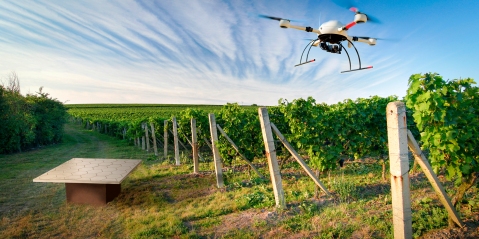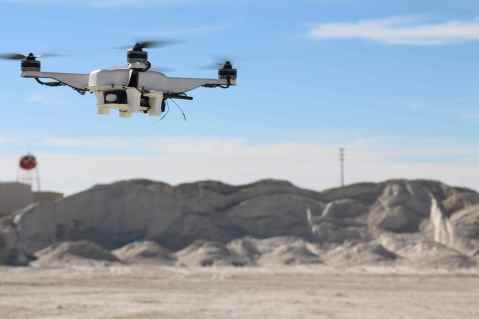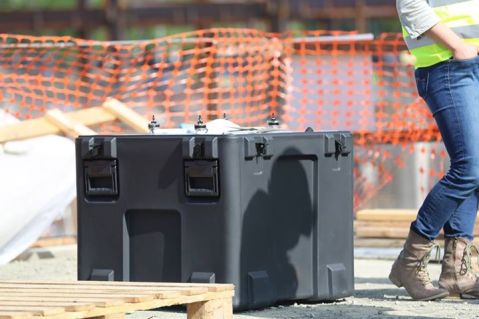Drone Startups – Top 10 drone startups @dronologista
Dear friends,
Although only five months young, dronologista blog has grown and needs a new attire.
As of 1st of September, dronologista.com moves to a new hosting, new address and slightly changes the appearance . Content will remain the same, and dronologista will continue to provide information about non-military drones only.
Enjoy!
Two months ago when I started posting Drone Startups articles here, I didn’t expect that I will have enough material to run with it as long as I would like to. And I would like to post on this topic for years, if possible, a very moderate goal.
Yet, two months fast forward, and there are ten articles covering a very vibrant community of entrepreneurs that are not only bringing change to the UAV environment, but are about to change the world. Some of them are genuine and ingenious, others are slightly bizarre and there is even one fake startup.
Here is the list of 10 startups that have been featured at dronologista:
1. Matternet
When you realize that more than 1 billion of Earth population, 1.000.000.000 human beings have no access to all season roads, it is sort of shocker. That is a problem Matternet wants to tackle, with the envisioned network of autonomous ground stations and UAV that can reach anyone, anywhere, anytime.
2. Honeycomb
Precision agriculture is one of the biggest markets for sensor equipped Unmanned Aerial Vehicles. Honeycomb is a Oregon based startup that wants to tap into that market with their AgDrone fixed wing UAV equipped with visible and multispectral cameras for high-resolution imaging and NDVI-based crop stress detection.
3. Skycatch
Skycatch is San Francisco based, Google backed startup developing a platform for capturing data at scale using small autonomous aerial robots. Their platform consists of UAV, ground stations and logistics dashboard enabling autonomous and remote drone operation.
4. Garuda Robotics
Garuda Robotics is the first startup featured here that is not US-based. They are from Singapore, and they offer drones and drone fleet management system called Garuda Cloud that comes with the dashboard, multimode flight plan generator, cloud storage and flight simulator.
5. Gofor
This is a complete fake startup. It created a lot of internet buzz, and even people from Google and Texas Instruments called Alex Cornell, the original prankster, asking if he was hiring. Well, he is not because Gofor was a sort of April Fools-day joke. But it just might happen that today’s prank becomes inspiration for a future startup.
6. DroneDeploy
DroneDeploy is a web-based control and management system that offers drone operators things like browser-based operations control, fleet management and tracking, electronic filling and related paperwork and data logging. Managing of multiple-drone operation is a complex task and DroneDeploy is among first to tackle this problem.
7. FlexBot
Flexbot is tiny, crowdfounded, open-source nanocopter, which can be controlled by a smartphone. With the price of only $49 for the basic product and whooping $159 for more expensive version that comes with 720p real-time video sending webcam, it is inexpensive and fun to fly.
8. EasyDrone
One of the personal favorites, Easy Drone is a plug-and-play aerial filming platform, incredibly compact and easy to assemble. It proved to be a smashing hit on Kickstarter as it reached it $20.000 funding goal within two weeks, and is now nearing its stretch goal of $30.000 that will include some very advanced features.
9. Skyteboard
This startup made me ask myself “why?”, for the first time since I am covering this topic. It goes in the bizarre category, since I am not sure why would anyone finance and buy “social network controlled quadcopter”. It seems that I am not alone, since crowdfunding is not going quite well for Skyteboard. Kudos to the engineering displayed, it is the only bright element of this project.
10. Skysense
One more entrant in the remote drone operation arena is Berlin based Skysense. Their inductive charging landing pad and drone hangars might be tapping into the same market in which Skycatch already is. If inductive landing pad and drone hangar is the way to go, the future will tell.
This list will continue to grow, since the drone market seems to be quite interesting for entrepreneurs, and dronologista will follow the topic with great interest and share the news with great devotion.
Do you know of a startup (not mentioned here, preferably) that is using, making or supporting drones?
Drone Startups part 10: Skysense
Dear friends,
Although only five months young, dronologista blog has grown and needs a new attire.
As of 1st of September, dronologista.com moves to a new hosting, new address and slightly changes the appearance . Content will remain the same, and dronologista will continue to provide information about non-military drones only.
Enjoy!
Multirotors and fixed wing drones are being used for precision farming, land monitoring and industrial inspection. Limited capacity of batteries and high costs of field operators constitute a severe limitation in operations that could be highly automated.
Skysense, a Berlin based startup, is trying to solve that issue in a very innovative manner. Instead of developing better batteries, they are developing charging pads and drone hangars.
Charging pad is a robust, waterproof aluminium plate, with a wide landing area, that enables wireless battery charging. It is very thin, only 1.5 inches (less than 4 cm) and very light, 4 pounds (less than 2 kg).
The charging pad can charge batteries as fast as a regular charging cable, and it supports nearly all existing multirotor and VTOL drones.
Skysense hangar is another product in development, and it is supposed to store and charge UAV between the flights. It is a protective structure that includes charging pad, it is remotely managed, and it provides syncing of collected data between the UAV and the cloud data storage.
Construction, mining, oil & gas, solar & wind and other industries are already using drones for land surveying and inspection, but operation of these industrial UAV requires a human operator. Skysense is a step into direction of fully automated drone operation. In that sense, it is somewhat similar to the Skycatch, another startup that is targeting the same market. The difference is that Skykatch enables automation through battery swapping, where Skysense does the same through wireless recharging. And while Skycatch enables almost instant operation of the drone, Skysense trades off speed of recharging for significantly less moving parts, theoretically improving reliability.
Which concept will be winning, we will see in coming years. At the end it might be something in between, like swapping the batteries, while enabling their wireless recharge.
Images courtesy of Skysense.
Drone Startups part 3: Skycatch
Dear friends,
Although only five months young, dronologista blog has grown and needs a new attire.
As of 1st of September, dronologista.com moves to a new hosting, new address and slightly changes the appearance . Content will remain the same, and dronologista will continue to provide information about non-military drones only.
Enjoy!
In this edition of drone startups, dronologista presents one of personal favorites: Skycatch.
Skycatch is San Francisco based, Google backed startup developing a platform for capturing data at scale using small autonomous aerial robots. Platform is a system consisting of three parts:
- Autonomous UAVs
- Ground stations
- Logistics dashboard
Autonomous UAVs are small, robust, weatherproof and are able to carry HD cameras and wide range of sensors, allowing its users to capture a variety of data types, enabling different perspective of operations.
Ground station is an engineering marvel, allowing the drones to be 100% autonomous. UAV can takeoff, land, swap batteries and transmit data without human intervention. It is a 45 kg box, with a circular opening on top. As drone approaches guided by GPS, camera and sonar sensors, the ground station uses its own sensors and a radio signal for terminal guidance. Robotic arm swaps the battery replacing it with the fresh one from a 10 battery rotating carousel. 15 gigabytes of data collected by the UAV is then beamed up to Box, a cloud based computing service.
Logistics dashboard is the system that allows users to select what data they want and when they want it, and the dashboard plans missions automatically, and delivers requested data.
Among the companies already using Skycatch system are construction giants Bechtel and DPR, and biggest solar power plant in the world, the Agua Caliente Solar Project in Arizona (article about solar panel inspection can be found here)
System can be also used for wind turbines blade inspection, mining operation surveillance and agriculture.
In the video presentation below, you can see how the Skycatch works.
http://vimeo.com/81128563#t=0s
Pictures and video courtesy of Skycatch.





